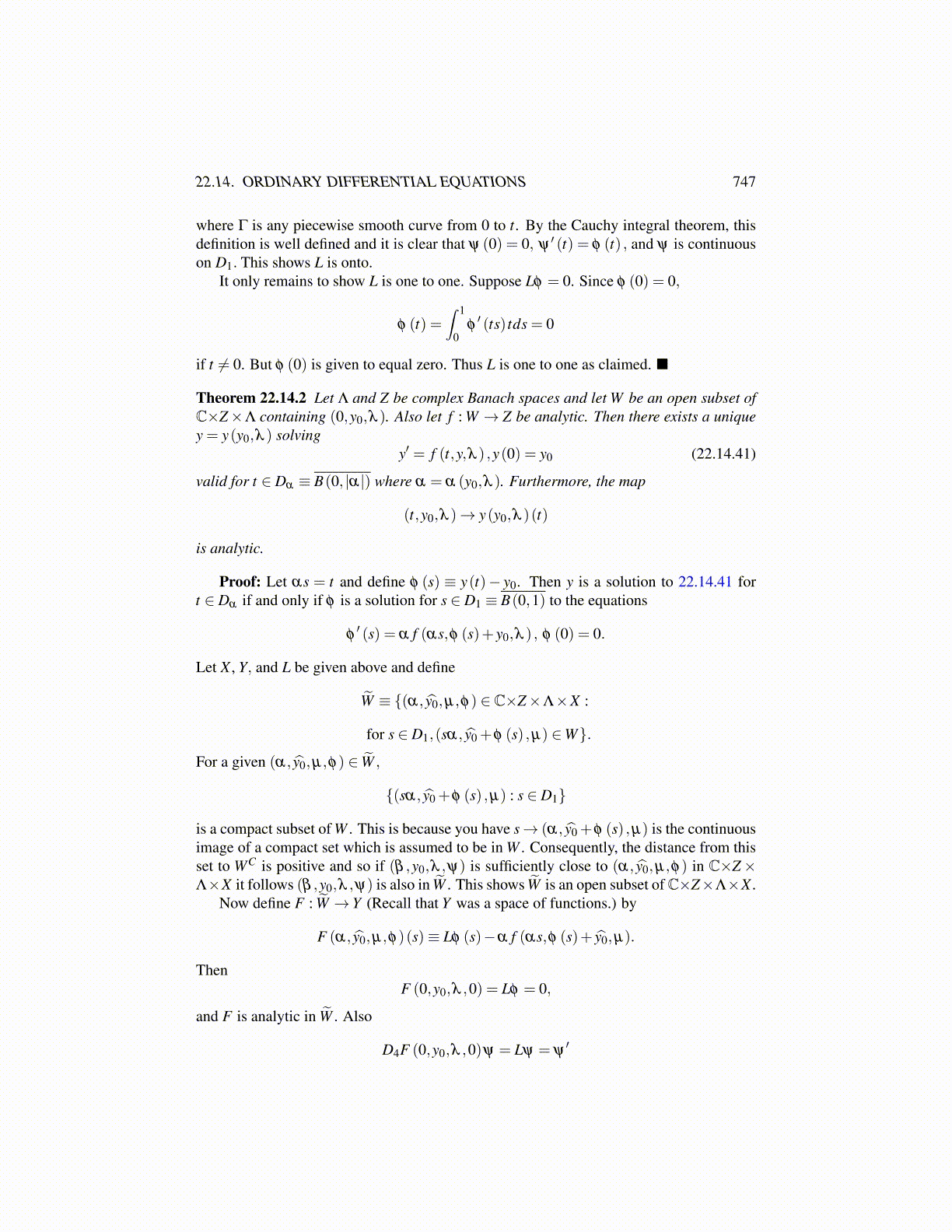
22.14. ORDINARY DIFFERENTIAL EQUATIONS 747
where Γ is any piecewise smooth curve from 0 to t. By the Cauchy integral theorem, thisdefinition is well defined and it is clear that ψ (0) = 0, ψ ′ (t) = φ (t) , and ψ is continuouson D1. This shows L is onto.
It only remains to show L is one to one. Suppose Lφ = 0. Since φ (0) = 0,
φ (t) =∫ 1
0φ′ (ts) tds = 0
if t ̸= 0. But φ (0) is given to equal zero. Thus L is one to one as claimed.
Theorem 22.14.2 Let Λ and Z be complex Banach spaces and let W be an open subset ofC×Z×Λ containing (0,y0,λ ). Also let f : W → Z be analytic. Then there exists a uniquey = y(y0,λ ) solving
y′ = f (t,y,λ ) ,y(0) = y0 (22.14.41)
valid for t ∈ Dα ≡ B(0, |α|) where α = α (y0,λ ). Furthermore, the map
(t,y0,λ )→ y(y0,λ )(t)
is analytic.
Proof: Let αs = t and define φ (s) ≡ y(t)− y0. Then y is a solution to 22.14.41 fort ∈ Dα if and only if φ is a solution for s ∈ D1 ≡ B(0,1) to the equations
φ′ (s) = α f (αs,φ (s)+ y0,λ ) , φ (0) = 0.
Let X , Y, and L be given above and define
W̃ ≡ {(α, ŷ0,µ,φ) ∈ C×Z×Λ×X :
for s ∈ D1,(sα, ŷ0 +φ (s) ,µ) ∈W}.
For a given (α, ŷ0,µ,φ) ∈ W̃ ,
{(sα, ŷ0 +φ (s) ,µ) : s ∈ D1}
is a compact subset of W . This is because you have s→ (α, ŷ0 +φ (s) ,µ) is the continuousimage of a compact set which is assumed to be in W . Consequently, the distance from thisset to WC is positive and so if (β ,y0,λ ,ψ) is sufficiently close to (α, ŷ0,µ,φ) in C×Z×Λ×X it follows (β ,y0,λ ,ψ) is also in W̃ . This shows W̃ is an open subset ofC×Z×Λ×X .
Now define F : W̃ → Y (Recall that Y was a space of functions.) by
F (α, ŷ0,µ,φ)(s)≡ Lφ (s)−α f (αs,φ (s)+ ŷ0,µ).
ThenF (0,y0,λ ,0) = Lφ = 0,
and F is analytic in W̃ . Also
D4F (0,y0,λ ,0)ψ = Lψ = ψ′